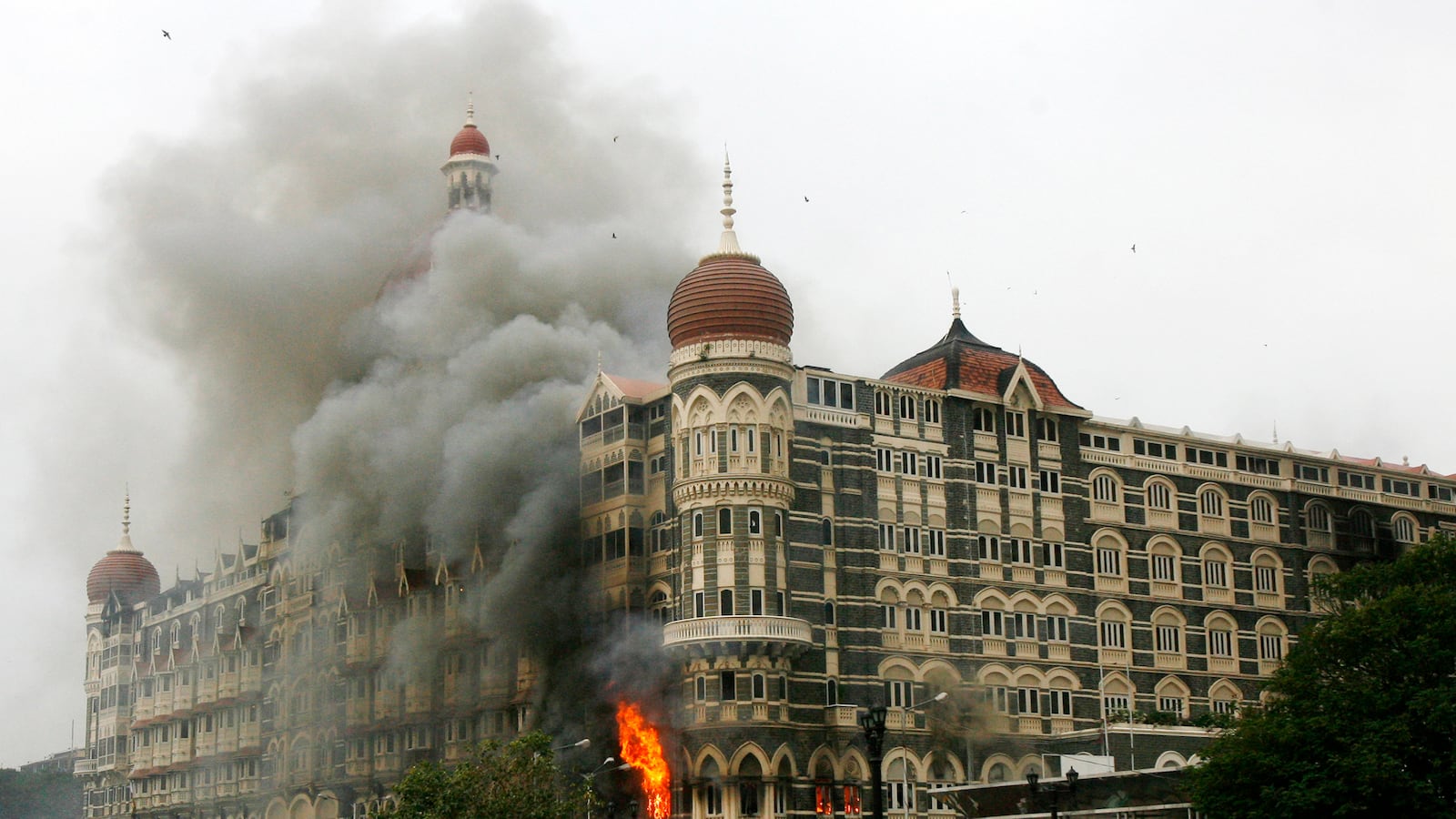In the months leading up to the November 2008 terrorist attacks that devastated Mumbai, the signs of looming catastrophe were unmistakable. That June, a 32-year-old police officer named Vishwas Nangre Patil became Deputy Commissioner of Police (DPC) for Zone 1—the teeming city’s beating heart—and immediately learned of warnings of planned attacks on Mumbai’s major landmarks, including its high-end hotels, had been passed to Indian intelligence and law enforcement authorities. The CIA was a primary supplier of these tip-offs: the US seemingly had a source inside Lashkar-e-Toiba, the Pakistani jihadist militia responsible for sending fidayeen, guerillas intent on fighting to the death, into divided Kashmir. According to the latest intelligence, Mumbai’s attackers would, unprecedentedly, arrive by sea.

Yet when Vishwas Patil, desperate to shake the city out of its inertia, asked the DPC for the relevant port how security could be beefed-up, he was told that funding was lacking. He also wrote to the Commandant Coast Guards, identifying obvious vulnerabilities. Nevertheless, a few months later, ten Lashkar fighters sailed the Arabian Sea from Karachi to Mumbai where, on the evening of Wednesday 26 November, they strolled ashore armed with AK-47s, pistols, ammo, grenades, and explosives. Their ensuing three-day reign of bloody chaos forms the spectacular narrative of The Siege: 68 Hours Inside the Taj Hotel, Cathy Scott-Clark and Adrian Levy’s painstaking and gripping recreation of one of the worst terrorist attacks in India’s history.
The Taj Mahal Palace, a century-old extravagance by the sea—“a confection of ornate balconies and bay windows, topped off by triumphant pink cupolas and a central dome…like a grand sandcastle tipped from its mould”—was known for playing host to international royalty, Hollywood stars, and the homegrown tycoons, heirs, and socialites known as “Ultras.” Offering impeccable service and the satisfaction of guests’ every whim—at an exorbitant price, naturally—the hotel’s management was almost solely focused on maintaining the atmosphere of heady, almost supernatural, luxury that warranted the nickname “House of Magic.”
Patil, anxiously aware that The Taj, along with the five-star Trident-Oberoi, had been earmarked for attack, saw past the glamour to the many dangers. In consultation with the hotel’s head of security, he made a host of safety recommendations, drawing attention to the slapdash screening for smuggled-in weapons and explosives, the absence of blast barriers or screens, and the many unsecured entrances. But only after more than fifty people were killed in the September 2008 bomb attack at the five-star Marriott in Islamabad, prompting Patil to put extra pressure on The Taj, was some of his advice implemented.
As soon became tragically clear, the increased security was still completely inadequate. Within hours of reaching dry land, two of the Lashkar terrorists, disguised as locals with short hair, clean-shaven faces, casual clothes, and even Hindu temple bracelets, were inside The Taj with backpacks full of weaponry.
Before joining them, their associates hit other locations with bombs and gunfire, including the Trident-Oberoi, the Leopold Café, and Chabad House, a Jewish outreach center. Eventually, by early Friday morning, all those targets were secured by police and Special Forces commandos. But multiple factors prolonged the siege of The Taj, including the shocking incompetence of the response effort, the labyrinthine and architecturally quirky vastness of the building—whose myriad extensions and renovations over the years weren’t all added to the architectural blueprints—and even the avid reporting of the world’s media, whose blow-by-blow coverage helped the Lashkar controllers in Karachi, in touch with their fidayeen by phone, to issue directions for maximum carnage.
Scott-Clark and Levy’s retelling of the disaster from the vantage points of trapped and imperiled guests and staff, as well as from the perspective of the terrorists themselves, reads like an expertly-constructed thriller that’s all the more heart-stopping because it actually happened. Hiding out in various parts of the hotel, hearing the staccato of gunshots overhead and underfoot as gunmen roamed the building, hundreds of people faced a terrible choice: if you barricaded yourself in a room, you might avoid getting shot, but you might end up burnt or asphyxiated as the gunmen started fires and caused explosions. Will Pike, a 28-year-old Londoner, decided that the only way out of his room, 60 feet above ground, was through the window, whose double-glazed panes he smashed with a marble coffee table. Sabina Sehgal Saikia, a prominent restaurant critic and mother of two, stayed huddled in her magnificent suite. Only one of them survived.
Many others, those at a function or in one of The Taj’s many bars and restaurants when unimaginable horror struck, found themselves in a captive group while staff did their valiant best to protect them. Scott-Clark and Levy vividly convey the hotel employees’ remarkable heroism: in attempting to evacuate guests, waiter Thomas Verghese and engineer Rajan Kamble deliberately ran into the path of gunfire as human shields, while coffee shop manager Amit Peshave was shot at while searching for a missing child. With dozens hiding inside Chambers, a large club, chef Raghu Deora offered to stay outside as a buffer and a distraction to the gunmen, who were “circling the club like wild dogs, battering at every entrance and service hatch, rattling locks, smashing glass panes, looking for any way in.”
The determined killers, impoverished villagers from rural communities in Pakistan, had volunteered for jihad a year before and undergone intensive religious indoctrination and military training. Martyrdom was the goal, and the moment of death was to be relished, not feared. “Your faces will glow like the moon,” their cleric had promised. “Your bodies will emanate scent, and you will go to paradise.” Ajmal Kasab, the only one of the original group of ten who was captured alive, grew up near the Punjabi city of Okara, where Lashkar’s message, that the displacement and slaughter of Muslims during Partition must be avenged by destroying India, was spread relentlessly. The five-foot-three 21-year-old, arrested during a bloody stand-off with police a few hours into the siege, wept under interrogation as he described being recruited—“my father told me we are very poor and then he introduced me to Lashkar men”—and answered all questions without resistance.
By now, the Anti-Terrorist Squad (ATS) had managed to intercept the phone conversations between the fidayeen and their handlers. Baffling, though, was the fact that calls seemed to be coming into Mumbai from a US number. US intelligence sources advised that an internet network was being used and that the terrorist nerve center could be anywhere in the world. Unable to track the calls to a location and swoop in, the ATS listened as the gunmen were ordered to light fires, set bombs, and tie up hostages: “God is waiting for you in heaven.” But even with this insight into events, what ought to have been accomplished speedily—the apprehending and neutralizing of a dwindling band of young men—was hampered by poor organization, mismanagement, and a general lack of preparedness. It took twelve hours for the National Security Guard, whose members are trained in rescuing hostages, to get to The Taj. First they didn’t receive the official green light to mobilize from Delhi for several precious hours, then they were impeded by transport blunders and faulty, outdated equipment and protective gear. Meanwhile Hasan Gafoor, Mumbai’s Commissioner of Police, instructed cops and soldiers at the scene to stand down until the NSG or the MARCOS arrived. The naval officers in charge of the MARCOS—India’s equivalent to the US Navy SEALS—hesitated to send them, fearing that they were “the wrong dog for the fight.” Eventually, in the early hours of Thursday, fewer than twenty MARCOS out of a team of 1000 arrived.
It wasn’t until Saturday morning that an exhausted, shell-shocked Vishwas Patil, who himself was nearly killed by an exploding fireball, stared up at The Taj’s blackened windows and saw, for the first time in three days, no one waving for help. The final death toll would be 166, with more than 300 injured. But the Deputy Police Commissioner envisaged that, Mumbai being Mumbai, only lip-service would be paid to understanding how the world’s fourth-largest city could so easily be brought to its knees. His cynicism was justified: Scott-Clark and Levy observe that 26/11, as the tragedy came to be known, “received only a cursory grilling from the Pradhan Commission, a two-man panel formed in Mumbai on 30 December 2008 to explore the ‘war-like’ attacks on the city,” compared to the many months of exhaustive probing into 9/11 and London’s 7/7 attacks.
As far as justice for the victims is concerned, a key conspirator in the attacks, an American-Pakistani named David Headley—an informant for US intelligence as well as a Lashkar operative—was arrested in Chicago, and in January 2013 was given a 35 year sentence after making a deal with the US authorities. Ajmal Kasab, of course, had nothing to bargain, and was hanged and buried in prison grounds. In Pakistan, retribution has been less swift: as the fifth anniversary of 26/11 approaches, seven suspects still await trial on charges of planning, financing and executing the attacks, to the impatience of the watching world. When Nawaz Sharif, Pakistan’s Prime Minister, visited Barack Obama in the Oval Office on October 23, the President asked why the trial hadn’t started yet. Twice postponed in October, proceedings at the Anti-Terrorism Court (ATC) in the capital Islamabad are now due to commence on November 6.
Among the seven awaiting trial is the co-founder of Lashkar and the alleged mastermind of the attacks, Zaki-ur-Rehman Lakhvi, currently held in prison in Rawalpindi. As well as enjoying conjugal visits with his wife, he’s been visited by Lieutenant General Shuja Pasha, the chief of Pakistan’s state intelligence service, ISI, under whose auspices Lashkar is widely believed to operate. In the wake of 26/11, Scott-Clark and Levy report, the ISI perpetuated the lie that the ten gunmen had been martyred in Kashmir. In the villages of the Pakistani Punjab, the authors tracked down the gunmen’s relatives, who “had all been told the same story.” As one father insisted, his son’s death in Mumbai was “a fiction created by India and America.”
Lashkar’s other co-founder, Hafiz Saeed, remains a free man, although the US government has placed a $10 million bounty on his head. The 63-year-old—who styles himself as the amir of Jamaat-ud-Dawa, Lashkar’s religious front group—was another talking point during the Pakistani government’s recent delegation to Washington. At a meeting with the Prime Minister’s senior officials, the US Committee on Foreign Affairs was told that if “concrete legal evidence” was obtained, action would be taken against the man branded one of India’s most wanted fugitives. In the meantime, he lives under police protection and continues to call for jihad to be waged on India. When Scott-Clark and Levy visited Saeed at Lashkar’s high-security training complex in Muridke, near Lahore, he scoffed at the accusations against him and denied he was in hiding. “I am here only, sitting with you.” In front of an audience of several thousand, he “combed through his beard, and then gestured with two open arms to his students, who cheered: ‘God is Great.’”





